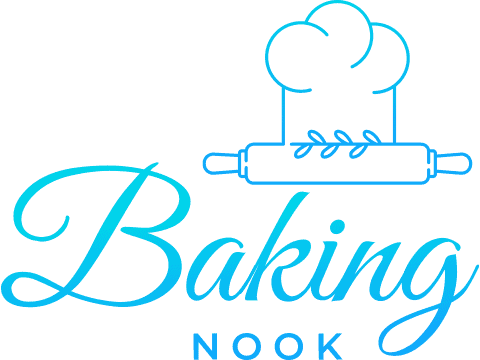This post contains affiliate links.
My kitchen is filled with plenty of tools and accessories that I use on a daily basis to bake and store my creations. Some of which are; aluminum foil, parchment paper, wax paper, and even freezer paper.
However, with years of experience in the kitchen, I realized that I still don’t know the full potential for all of these linings and papers. So I asked myself; what is the difference between aluminum foil, parchment paper, wax paper, and freezer paper?
| Type of Paper | Usage | Coating | Can It Go Into Oven? |
| Aluminum Foil | Lining baking sheets and pans | No Coating | Yes |
| Parchment Paper | Lining baking sheets and pans Assist in cake decorating | No Coating | Yes |
| Wax Paper | Rolling out dough No-bake desserts Storage of baked goods | On Both Sides | No |
| Freezer Paper | Safe storage of food in freezer | On One Side Only | No |
Aluminum Foil can go in the oven but does not have any coating. Aluminum Foil can be used to line baking sheets and pans.
Parchment paper can go in the oven but does not have any coating. Parchment paper can be used to line baking sheets and pans.
Wax Paper can’t go in the oven because of its lining on both sides. Wax paper can be used for rolling dough, no-bake desserts, and storage of baked goods.
Freezer paper can’t go in the oven because it has a lining on one side. Freezer paper can be used for storage of food in the freezer.
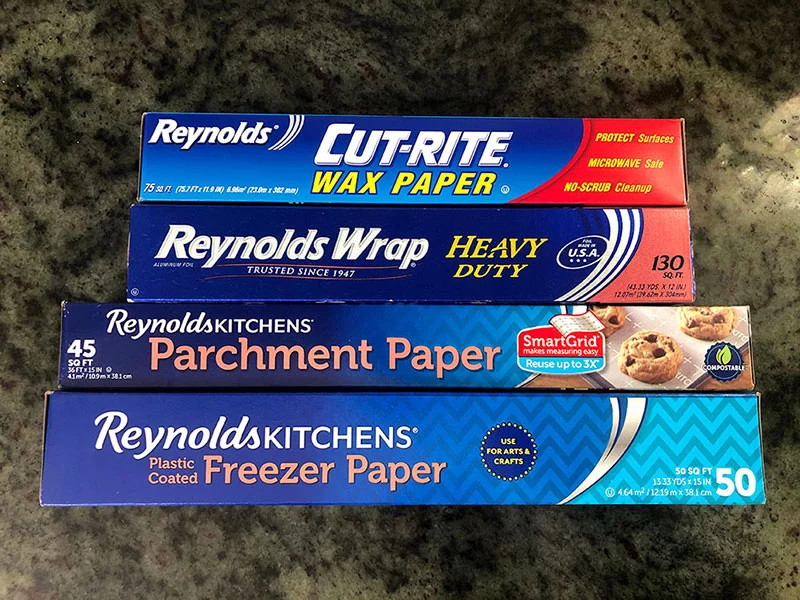
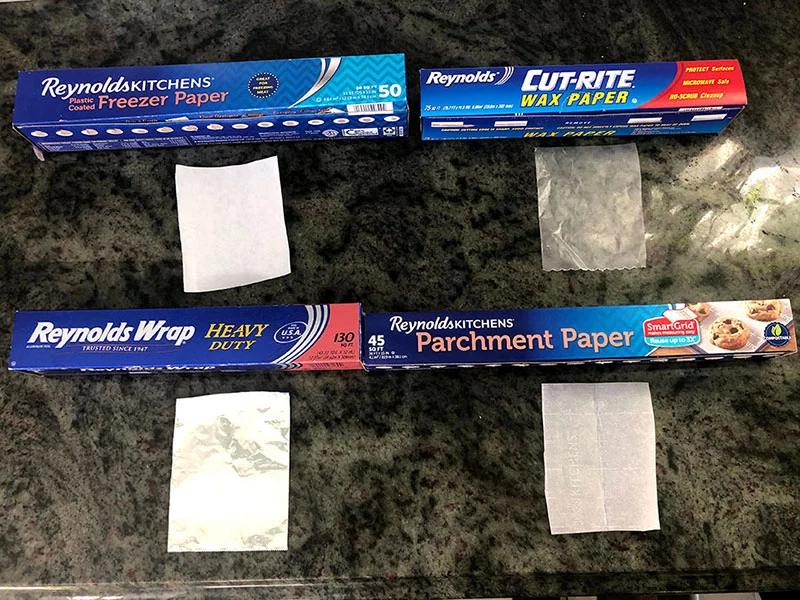
As a person who practically lives in the kitchen daily, I can safely say that learning the difference between these linings and papers has helped me improve my baking overall while saving me from making some fatal mistakes! After learning all the different uses, I decided to share my findings with you! Here’s my complete guide!
Aluminum Foil
What Is It?
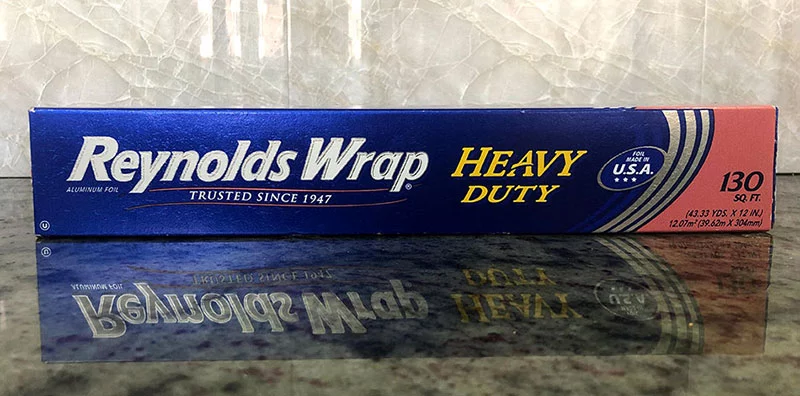
We all use aluminum foil on a daily basis. I use it in all aspects of cooking, baking, food storage and even a way to transport my lunch! There is a small variety of aluminum foil available for use: regular, heavy-duty, and extra heavy duty.
The major difference between these three types of aluminum foil is their thickness. Just in case you wanted to know, here’s a simple chart I found that helps compare the different thicknesses of aluminum foil:
| Type of Foil | Thickness in Millimeters |
| Standard | .0101-.01778 |
| Heavy Duty | .02032-.0254 |
| Extra Heavy Duty | .02794-.04064 |
You can find the full article talking about aluminum foil here.
So, how do I know which foil to use?
- Regular Aluminum Foil: Because it is thinner and not as sturdy for baking, this standard-sized aluminum foil is great for covering food for storage or replacing a cover of a container if you can’t find its lid.
- Heavy-Duty Aluminum Foil: This is ideally used in baking because it is thicker and can withstand heat better. Oven heat can be considered moderate which is perfect for heavy-duty foil. These can be used to line baking pans and sheets.
- Extra Heavy-Duty Aluminum Foil: This foil can withstand extreme temperatures and is ideal for exposing onto direct flames. If you want to wrap some corn or other vegetables with foil on a grill, extra heavy duty is needed. This foil is also great for wrapping heavier foods for storage such as whole baked chickens.
*Side Note: I recently wrote an article about If It’s Safe to Use Aluminum Foil In The Oven. This article talks about what you can expect when using aluminum foil in the oven. You can check out this article here!
What Is Aluminum Foil Used For In Baking
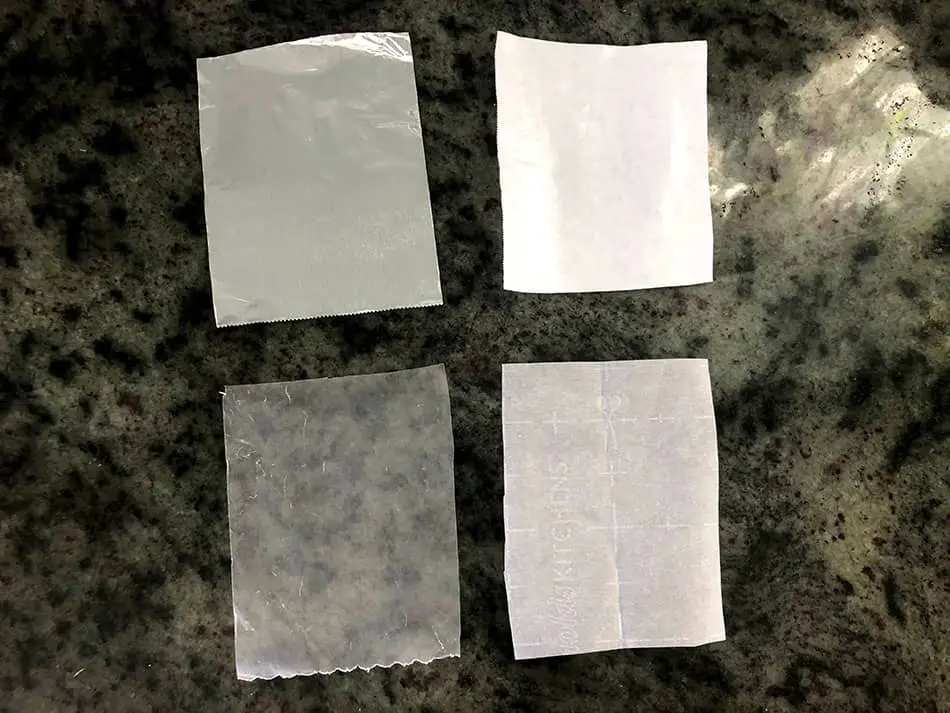
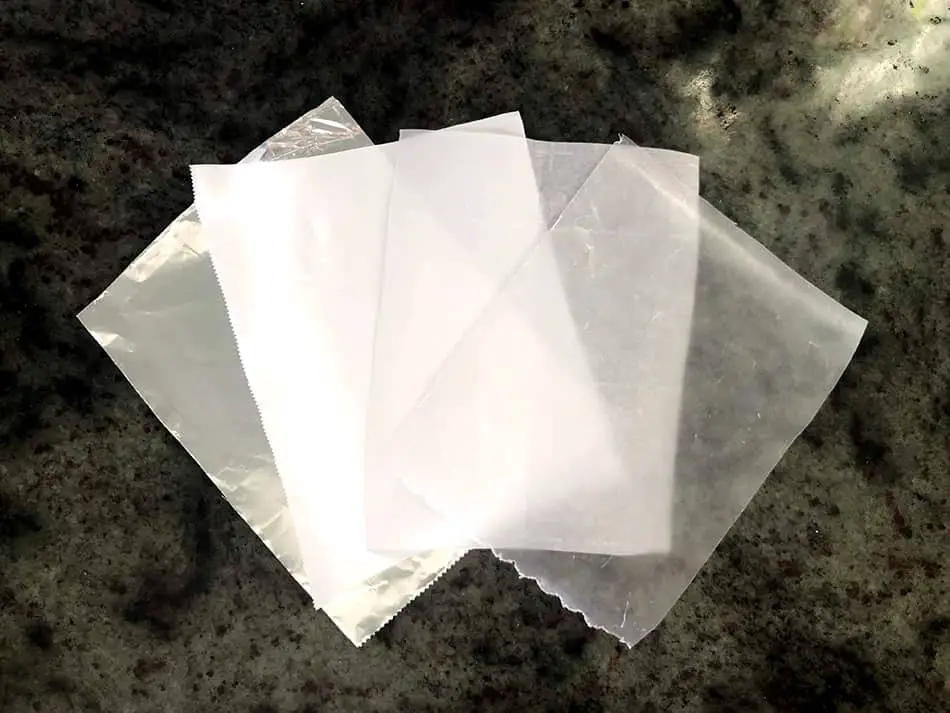
Aluminum foil is a staple item in almost every household. There are countless tips, tricks, and recipes that include the use of aluminum foil. Here are some ways to use aluminum foil in baking:
- Lining/Covering baking pans and sheets
- Using ready-to-buy aluminum foil pans found in any supermarket
- Lining the outside of baking pans when being immersed into a water bath (such as cheesecake)
- Baking with aluminum pans that are available at any major supermarket
Other Applications Related To Baking
Aluminum foil is a very versatile tool in every kitchen. There’s a small trick I do when lining my baking pan with foil for brownie baking. Lining my pan with aluminum foil really helps when removing the brownie chunk post oven. In my article about how to get brownies out of a pan, I spoke about this method in detail. It’s simple and efficient for removing brownies from a pan.
The trick is, before baking, simply line your baking pan with aluminum foil while making sure to make it a few inches longer than your actual pan. The excess foil can be used as a handle to remove your brownies safely after baking!
Parchment Paper
What Is It?
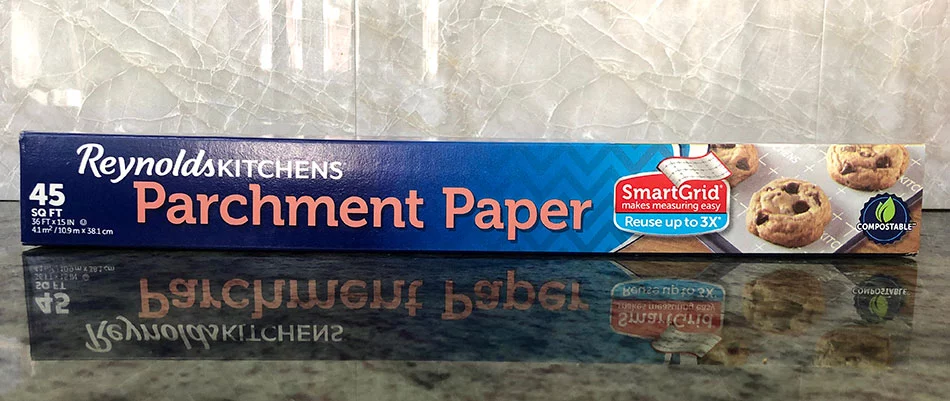
Parchment paper is arguably the holy grail of baking. It is looked at as a disposable non-stick surface which can be used in the oven as well as a surface to work on.
I always had the old-fashioned parchment paper roll in my kitchen but I recently came across a Box of Heavy Duty Flat Parchment Paper Sheets that work great without trying to rip the perfect sheet which never seems to work out. These sheets come in different sizes to fit your pans! You can check out these parchment sheets on Amazon!
Parchment paper is typically confused with wax paper which is different. In short, yes they can be used in place of each other but DO NOT expose wax paper to heat! If wax paper goes in the oven, it melts the wax and will seep into your baked goods.
Parchment paper is able to withstand temperatures of up to 450 degrees Fahrenheit which means it is safe to put into the oven. This paper has been coated with something nonstick (such as a thin layer of silicone) and treated with an acid that contributes to an increase in heat resistance.
*By the way, I recently wrote an article about The Difference Between Parchment Paper and Wax Paper. This article talks about in detail when to use both papers and how to make the best out of them. You can check out this article here!
What Is Parchment Paper Used For In Baking
Parchment paper is typically used for baking many different types of delicious goodies. Its non-stick properties are very attractive to bakers because it means food will not stick to the surface as well as easy cleanup.
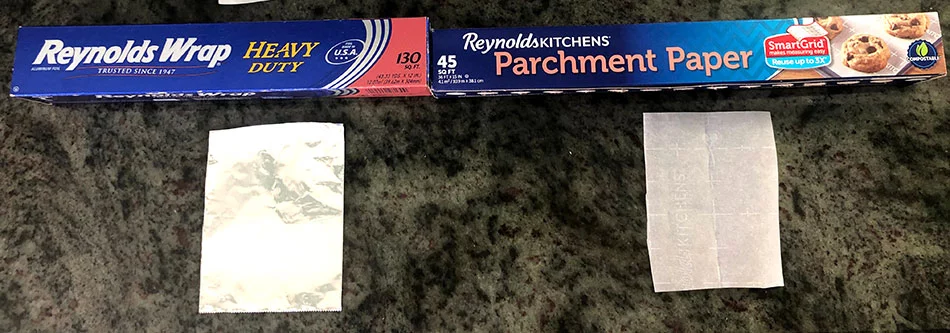
Lining baking pans and baking sheets are ideal to do with parchment paper, depending on what you’re baking. If you’re stuck between choosing between aluminum foil and parchment paper when lining your sheets, this mini-guide should help:
| Type of Pastry | Aluminum Foil or Parchment Paper | Why? |
| Cookies | Both | Parchment paper is ideal but if you prefer crunchier cookies, use Aluminum foil* |
| Brownies | Aluminum Foil | Provides even baking which gives an equal distribution of heat. Also, it works great as a way to remove them from the pan |
| Cake | Parchment Paper | Creates an even surface when baking. Aluminum foil will have creases which will show on the cake after it’s baked |
| Puff Pastry | Parchment Paper | Puff Pastry dough typically sticks to aluminum foil. Parchment paper is nonstick which prevents sticking. Use another layer of parchment paper on top of your pastry for more rise |
I know some of you might worry about using aluminum foil over parchment paper.
*Side Note: You might also be interested to know if it is possible to Bake Cookies On Aluminum Foil. I wrote an article explaining What to Expect When Baking Cookies On Aluminum Foil, which you can check out here!
Other Applications Related To Baking
A quick clean up is something we all strive for in baking. Besides using parchment paper in a pan for a fast and easy way to clean up, use it for when you need to decorate your baked goods.
Lay a piece of parchment paper down on your counter and put your baked product on it. Now you can drizzle on any chocolate sauce, caramel sauce, or even a simple sprinkle of powdered sugar on top!
The parchment paper will catch any mess so you’re left with a fast way to clean AND have gorgeous decorations in minutes.
Wax Paper
What Is It?
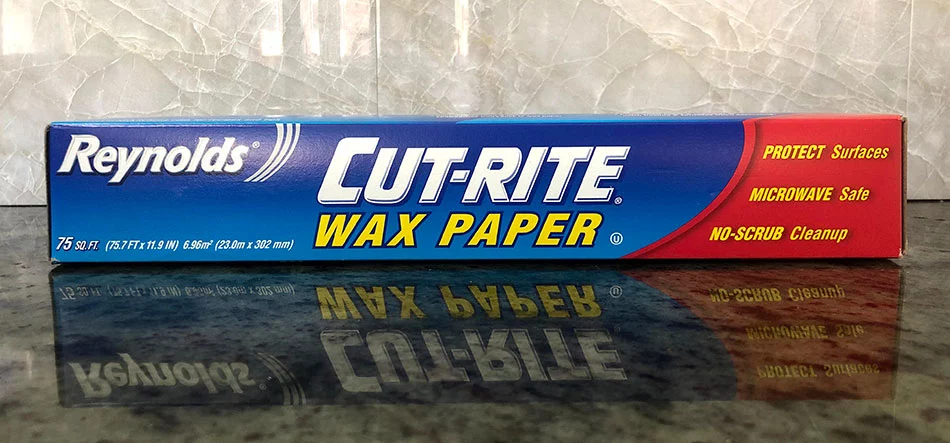
Wax paper and parchment paper are always mixed up because of how similar they look. Wax paper actually does have a layer of wax on it. REMEMBER wax paper DOES NOT go in the oven!
We all know that wax melts with heat, so do not line your pans with wax paper. However, if you just want to microwave something, wax paper can be put into the microwave (usually indicated on the package).
The purpose of the wax layer on the paper is to prevent moisture from coming in or out of the paper. This makes it ideal for the storage of freshly baked goods.
After cooling down a cake, brownies, or other delicious treats, you can wrap it up with wax paper which will prevent any excess moisture from invading your yummy baked items. Also, this will help any moisture from leaving your cakes and brownies because it will contain the moisture inside of them.
What Is Wax Paper Used For In Baking
Wax paper is the best to use when rolling out dough. I’ve personally experimented with this with both wax paper and parchment paper. I’ve found that rolling out dough on parchment paper isn’t as non-stick as I would like.
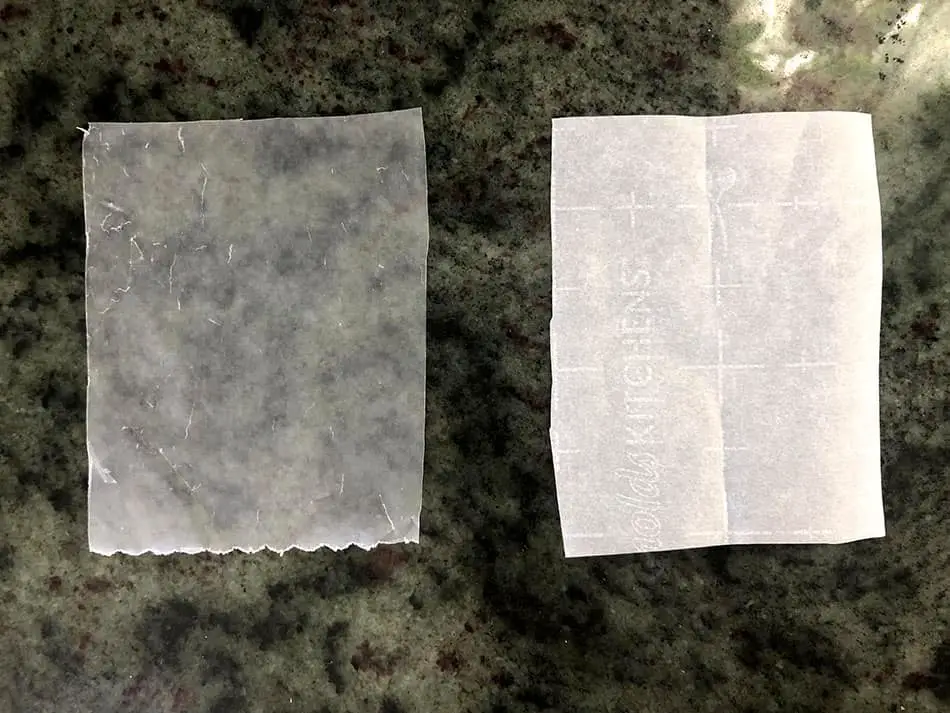
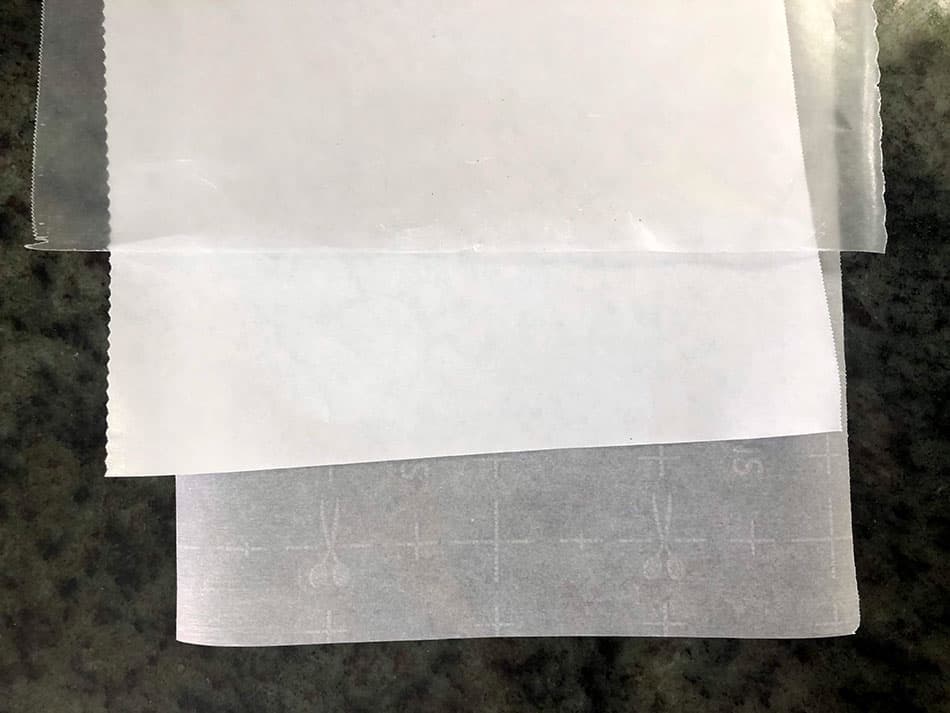
The wax coating on the wax paper prevents your dough from sticking to the surface, making it ideal for rolling out.
Now, you can still line some pans with wax paper but ONLY if you are using recipes that are no-bake. Some recipes out there including cheesecakes and fruity bars can be made without any heat application. Just lining a pan with wax paper and placing it into the fridge or freezer is perfectly fine to do.
This helps remove your cakes out of the pan and speed up your cleaning process.
I recently spoke about the different ways to cut a successful cheesecake slice where one of the methods was using wax paper as the separation between each slice while cutting. You can learn exactly how to do that in my article here!
Other Applications Related To Baking
Baking doesn’t necessarily mean putting something into the oven. Every year on Valentine’s day, I love to make chocolate-covered strawberries. The problem I’ve encountered many times was removing the strawberry from a surface after I’ve dipped it in chocolate.
Wax paper makes life easier; you dip a strawberry into your choice of chocolate and place it onto the wax paper to set. Without the wax paper, spreading occurs around the strawberry and causes irregular shapes on the bottom.
With the wax paper, there is minimal spreading which helps keep the elegant shape of the strawberry. On an unlined surface, the chocolate-covered strawberries can easily stick; using wax paper will prevent the strawberry from sticking.
So to sum it up, you can use parchment paper if you’re baking with heat and wax paper if you’re decorating or making cold “no-bake” desserts.
Freezer Paper
What Is It?
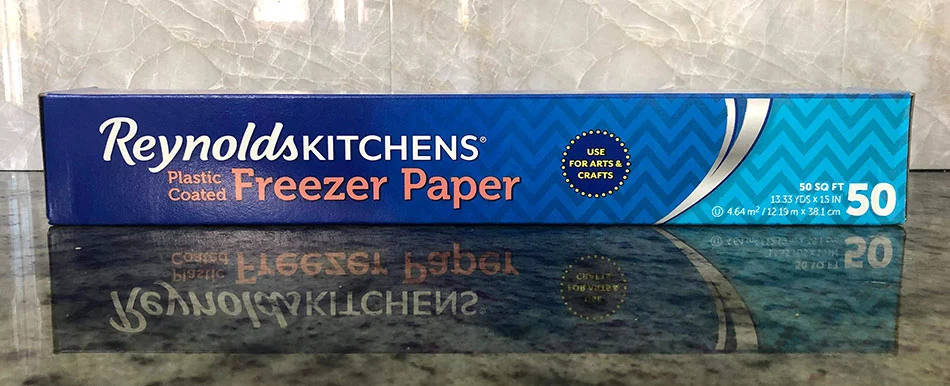
Freezer paper is a bit thicker than the previous two papers we’ve talked about. The main difference is that one side of the paper has a waxy-plastic coating while the other side does not.
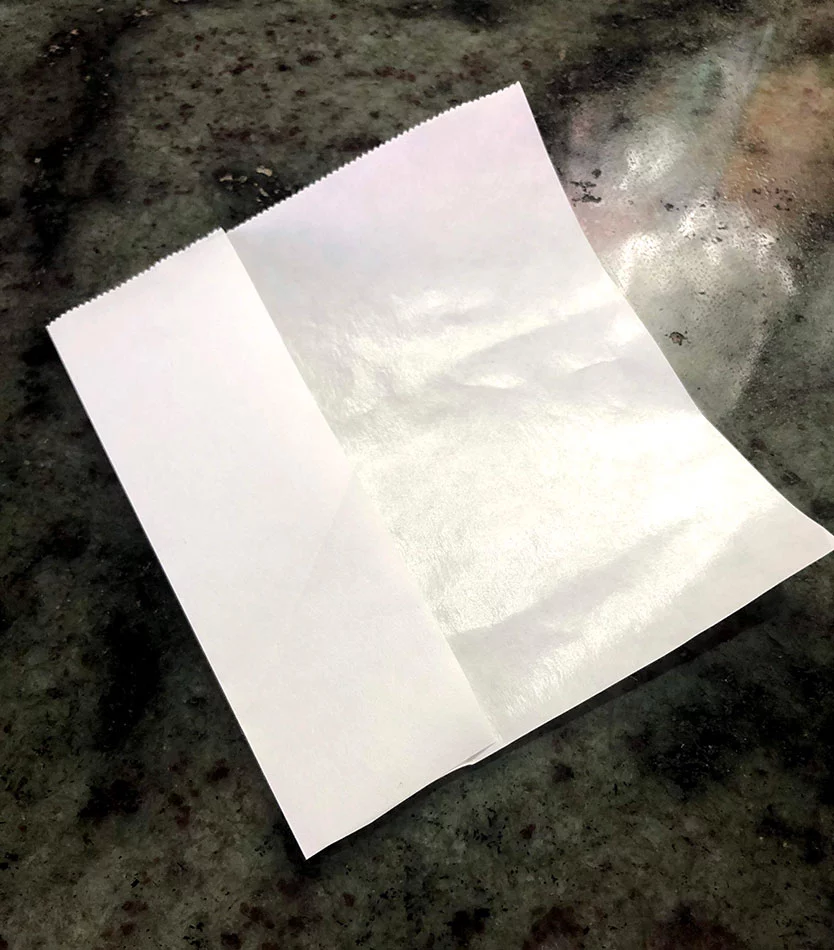
You Can Feel The Difference On Both Sides of the Paper!
It’s no wonder why butchers love using freezer paper. It’s great for freezing meat and fish which prevents any moisture from coming in or leaving your wrapped package.
I use it all the time when I want to store my meats in the freezer. I used to just store my freezer produce in plastic resealable bags but would still occasionally end up with freezer burn. Freezer paper helps prevent freezer burn!
Now, this is a big point: just like wax paper, freezer paper is NOT allowed in the oven! Because it has a plastic or wax coating on one side, it will melt in the presence of heat. So remember-of the three papers-only parchment paper is allowed to be placed in the oven or exposed to heat.
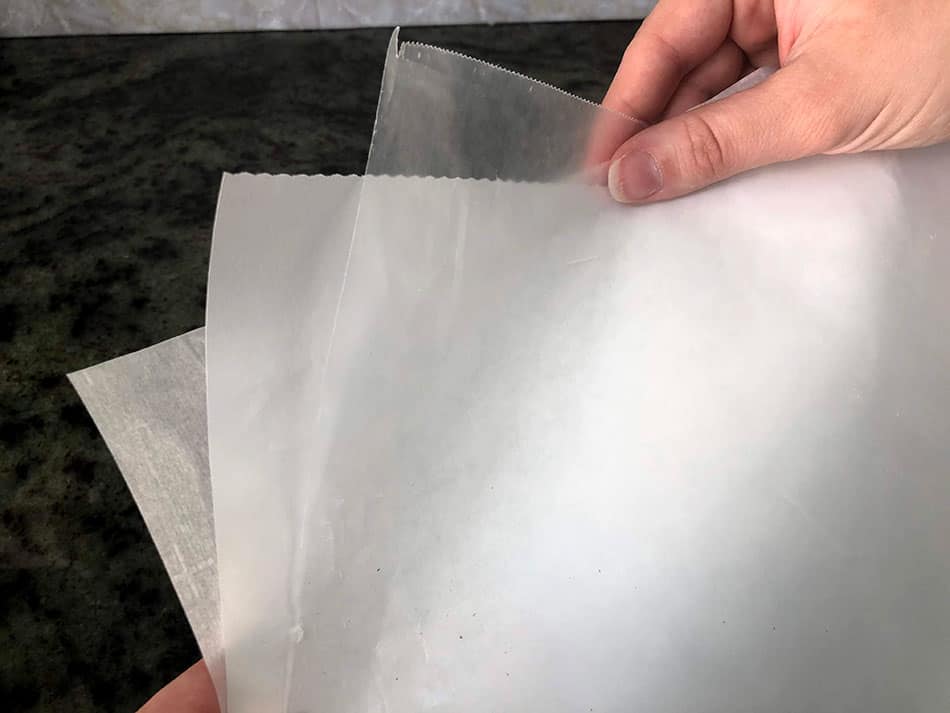
Because one side of the thick paper is coated in plastic, that is the side that will touch your food. The other side, however, has the feel of regular paper which is great because you can then write directly on the paper! I label my produce with the type of meat or fish I’m freezing along with the date I wrapped it.
“If freezing meat and poultry in its original package longer than 2 months, overwrap these packages with airtight heavy-duty foil, plastic wrap, or freezer paper; or place the package inside a plastic bag”
Food & Drug Administration (FDA)
You can find the full article about freezing different foods and their durations on the FDA website here.
What Is Freezer Paper Used For In Baking
As the name implies, freezer paper is used to pack meat products and other produce in the freezer. But, you can also use them for rolling out cookie dough or kneading dough for bread.
The plastic side of the paper should be facing up towards your dough and the paper side should be on the bottom. The plastic side will have nonstick properties when kneading or rolling out your dough.
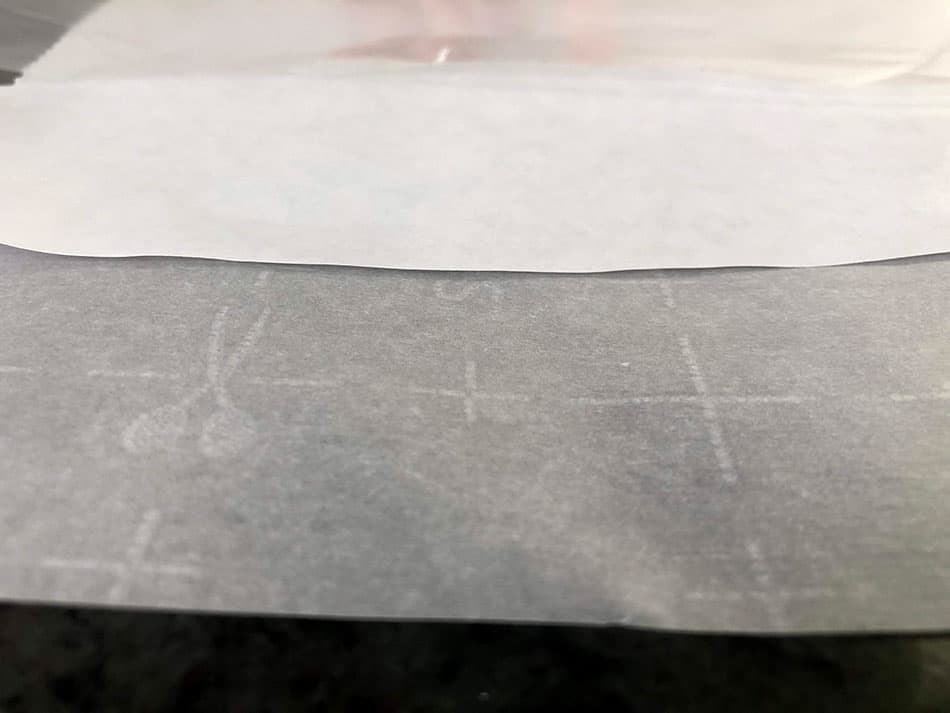
Another application that I use interchangeably with wax or freezer paper is using it as a cover in the microwave. The waxy side of both papers helps produce a moisture barrier between your food and the outside.
I especially like to use these over clingwrap for environmental reasons. I’m not saying freezer paper isn’t safe but it’s better than wrapping my items in literal plastic for the microwave.
When I melt chocolate in the microwave (I prefer the double boiler method but sometimes time isn’t always on my side). I like to lightly cover the bowl with freezer paper – waxy side down – to prevent any moisture from seeping in. This is a common problem that causes chocolate to seize up and give you a major headache.
What Can I Use If I Don’t Have Freezer Paper?
Freezer paper should wear a cape with the amount of food and money it has saved me in the past. Not properly storing food in the freezer results in freezer burn or general destruction of product quality.
You can typically find freezer paper in the same aisle where aluminum foil and cling wrap are sold. There are common misconceptions about what to use as a supplement so here are some tips to clear things up:
- Wax Paper: It is NOT recommended to store food using wax paper. If you are storing food short-term (you’ll be cooking it within a few days) then you can due to its ability to avoid moisture from seeping in. If you’re planning on storing food long-term, wax paper does not prevent against freezer burn.
- Aluminum Foil: Yes! Foil is actually a great way to properly store food in the freezer. But the most important thing you need to remember is always to cool down your food first. If you’re storing uncooked products, wrap the foil in multiple layers to make sure it’s sealed completely. If the food is cooked, cool down all the way and then wrap it.
- Cling Wrap: Many people have debated this but cling wrap provides no safety against the freezer. Do not use cling wrap to store food in the freezer; it can only be used to store food in the fridge.
If you don’t have any aluminum foil or freezer paper, you can always leave your produce in its original packaging (because it’s vacuum-sealed). If you’re using cooked food, make sure to use special freezer plastic bags, they seal well against moisture.
To Summarize…
Aluminum foil, parchment paper, wax paper, and freezer papers are commonly used in every kitchen. Learning each paper and lining has helped me take full advantage of each one of these tools.
Understanding the full potential of the tools in my kitchen really diversified my capabilities and expanded my knowledge! I hope that I helped you learn something new about these underutilized tools in your kitchen!
